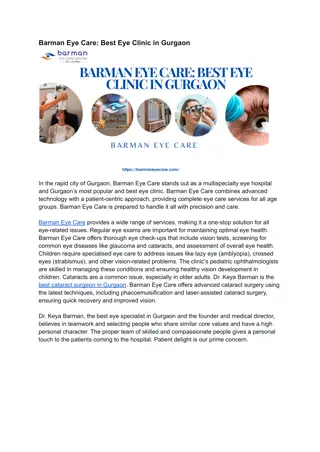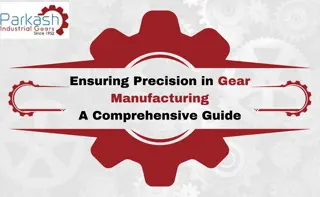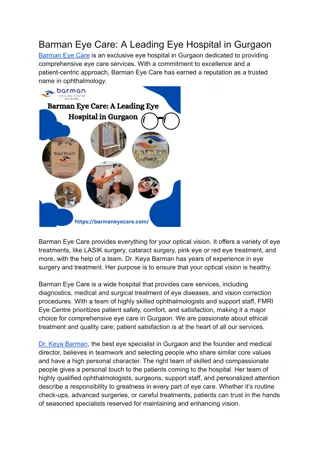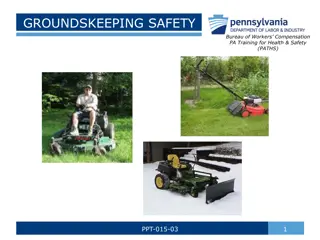Protective Gear for Eye, Hand, and Head Safety in the Workplace
Personal Protective Equipment (PPE) such as goggles, gloves, and hard hats are crucial for safeguarding against work-related hazards. The content discusses the importance of proper clothing, eye protection, selecting the right gloves, and using hard hats for head protection. It also highlights the common causes of eye injuries and emphasizes the significance of wearing the appropriate PPE to prevent accidents. Understanding different types of gloves and hard hat classifications is essential for ensuring workplace safety.
Download Presentation

Please find below an Image/Link to download the presentation.
The content on the website is provided AS IS for your information and personal use only. It may not be sold, licensed, or shared on other websites without obtaining consent from the author.If you encounter any issues during the download, it is possible that the publisher has removed the file from their server.
You are allowed to download the files provided on this website for personal or commercial use, subject to the condition that they are used lawfully. All files are the property of their respective owners.
The content on the website is provided AS IS for your information and personal use only. It may not be sold, licensed, or shared on other websites without obtaining consent from the author.
E N D
Presentation Transcript
PPE are devices designed to protect the body from contact with work related environmental hazards. This may include: Proper clothing Properly fitting clothing, minimal jewelry, or pulled back hair. No large rings Steel-toed boots Goggles, face shields, or safety glasses The right gloves Appropriate material Right fit Proper ear protection Ear plugs, ear muffs Head protection (Hard Hats) Each Job Can Require A Different Type of PPE Than Others . Choose the Right PPE For Each Job!
Eyes What causes eye injuries? Almost 70% of accidents result from flying or falling particles or sparks striking the eye. Chemicals cause only about one-fifth of eye injuries. What contributes to eye injuries? Not wearing eye protection. Nearly three out of every five workers injured were not wearing eye protection at the time of their accident. Wearing the wrong kind of eye protection for the job # 1 injury when PPE is used improperly or not used at all.
Hands Select and use the right glove for the job Remove any rings, watches or bracelets that may tear the gloves Wash hands before and after wearing gloves Inspect your gloves before you use them Keep gloves in accessible areas Store gloves palm-side out in a cool, clean, dry, ventilated area Never wear gloves around power rotating equipment
Types of Gloves Wool Protects against cold weather and snow Coated Fabric Protects against some moderate concentrated chemicals Rubber/Plastic/Synthetic Great for cleaning or working with oils, solvents, and other chemicals Leather Protects against rough objects, chips, sparks, and moderate heat. Cotton/Fabric Protects against dirt, splinters, and abrasions. Helps grip slippery objects. Do not use when working with rough, sharp, or heavy materials. Kevlar Cut and abrasion resistant and provide protection from both head and cold
Head Hard hats are required when working in areas where there is a potential for injury to the head from falling objects. All hard hats must comply with ANSI Z89.1 Types and Classes Type 1 - Helmets intended to reduce the force of impact resulting in a blow only to the top of the head. Type 2 - Helmets intended to reduce the force of impact resulting in a blow to the top and the side of the head Class E Helmets are for where electrical hazards are present (in utility services) that are non- conducting and intended to protect against falling objects and reduce the danger of exposure to high voltage electrical shocks and burns. Offers the highest protection with high-voltage shock and burn protection up to 20,000 volts. Class G Hard Hats are for General Use intended to protect against falling objects and reduce the danger of exposure to low voltage electrical conductors. They provide impact and penetration resistance and protection from up to 2,200 volts. Class C Hard Hats are not tested for electrical resistance. They are designed for lightweight comfort and impact protection and are not intended to provide protection from electrical conductors.























